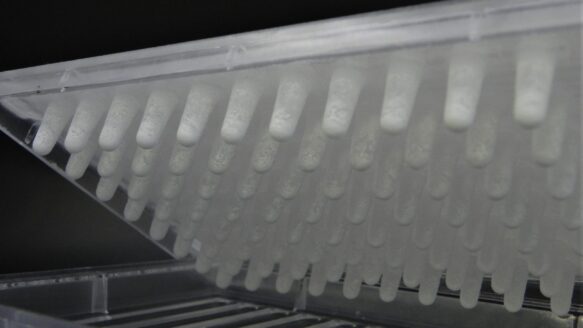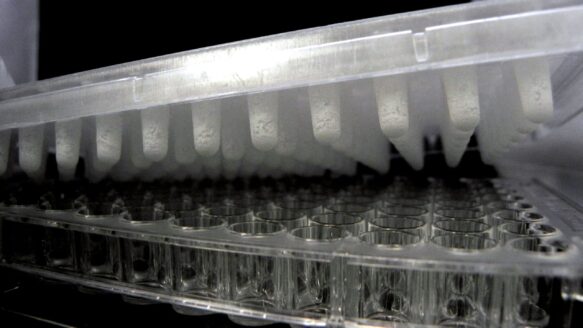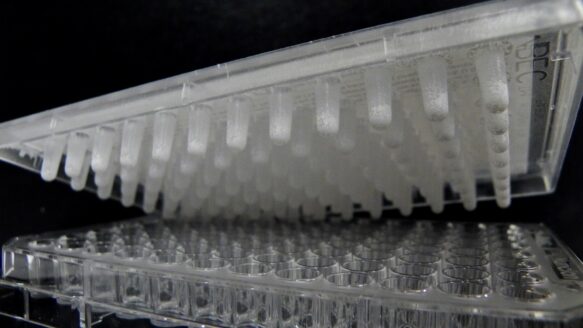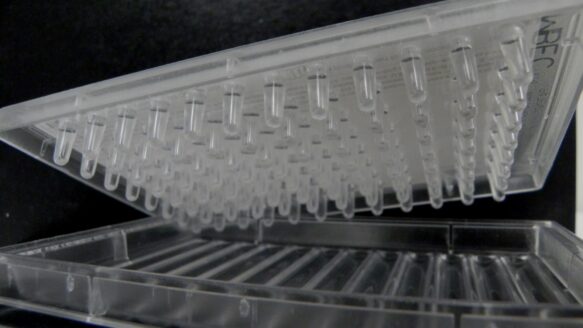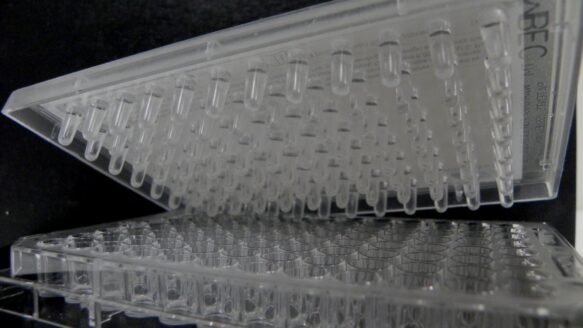PRODUCT DESCRIPTION
The MBEC Assay® Kit consists of a plastic lid with 96 pegs and a corresponding base. This Biofilm Inoculator is available with either a 96 well base or a trough base.
Biofilms are established on the pegs under batch conditions (no flow of nutrients into or out of an individual well) with gentle mixing. The established biofilm is transferred to a new 96-well plate for antimicrobial efficacy testing.
The assay design allows for the simultaneous testing of multiple biocides at multiple concentrations with replicate samples, making it an efficient screening tool.

96 Well Base

Trough Base
PRODUCT USES
- Coating pegs with hydroxyapatite facilitates biofilm growth by fastidious microorganisms such as Candida sp. This has proven to be beneficial when studying bone or dental biocides.
- Coating pegs with cellulose promotes biofilm formation by plant pathogens which may not grow readily on the uncoated plastic surface.
- Titanium dioxide has been reported as an antibacterial substance due to its photocatalytic effect. Titanium dioxide coated MBEC Assay® plates provide a great platform to test titanium dioxide’s effect on biofilm formation.
- Antibiotic, biocide, disinfectant and heavy metal susceptibility testing of biofilms to determine a minimum inhibitory concentration (MIC), a minimum biocidal concentration (MBC) and a minimum biofilm eradication concentration (MBEC).
- Basic research in the physiology and genetics of biofilms (such as screening to identify mutants impaired in their ability to form biofilms).
- Comparative biofilm growth assays of up to 96 different isolates under identical culture conditions.
- Comparative studies of gene expression in multiple isolates or mutants.
- Selection criteria applied against biofilm microorganisms.
- Checkerboard assays to identify synergistic interactions between antimicrobials used to treat biofilms.
- Time course studies of biofilm formation or treatment in a single assay, since the pegs are designed to be easily removed from the peg lid.
- Scanning electron microscopy (SEM) and confocal laser scanning microscopy (CLSM) to examine biofilm structure.
- Many conventional assays for attachment, growth, survival, or metabolic activity to measure the parameters of interest to the researcher. These can be done while the biofilm is intact on the peg or following sonication to again produce a planktonic population.
(formerly the Calgary Biofilm Device)
Current MBEC Assay® Kits
Available to buy online

